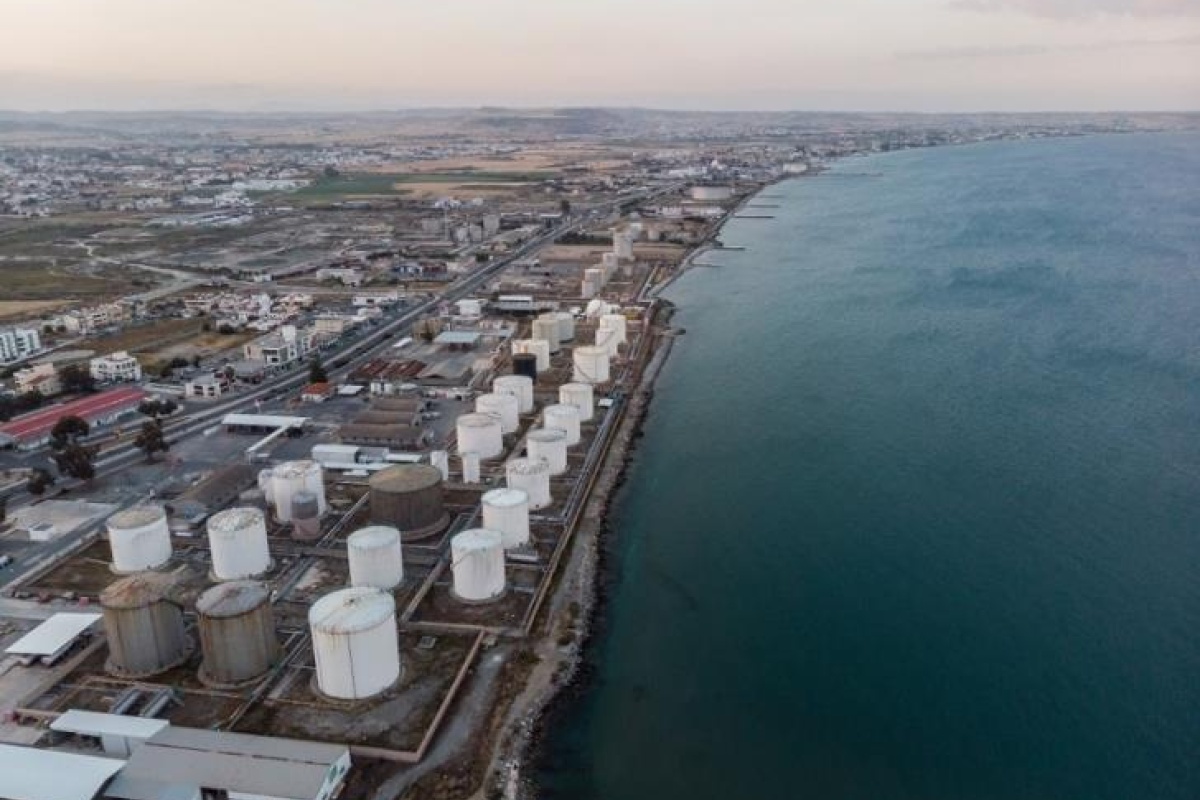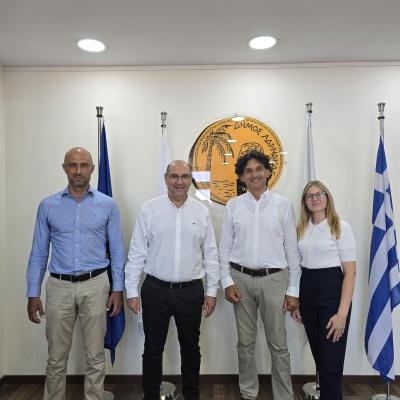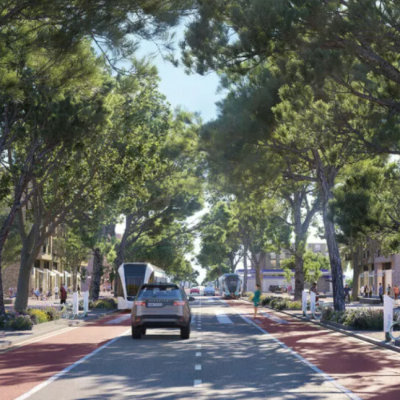
Roadmap for development in the area of former refineries
The lifting of the Seveso directive from the area of the former refineries last Friday paves the way for large investments in the area, which will be located in an area of more than 4.5 square kilometers, three of which are located on the coastal front. Already as announced yesterday during the official ceremony for the declassification of the area, the first applications for investments began to be submitted.
The competent Authority of Larnaka Municipality is already examining the first two applications for planning permission for buildings in the area of the nautical club. These are multimillion-euro investments by Israeli investors, who want to erect two high-rise buildings for residential and tourist use.
In the near future, as the mayor of Larnaka mentioned, applications for investments of €50-60 million are expected to be submitted to the Department of Town Planning. euros in areas falling within the boundaries of Livadia and Oroklini, which do not have their own urban planning authority. "There are two investments, one is €10 million. and the other ECU 15 million. euros, who wanted to apply but couldn't, because it was Seveso's limitations. Applications will also be submitted in the area for many houses, since many areas in the Municipality of Livadia and the community of Oroklini are becoming residential, something that will decongest the city of Larnaka".
The Petrolina Group, which owns an area of 400,000 meters in the area and plans to develop more than €1 billion, will apply for planning permission in the coming weeks for the ambitious master plan of Larnaka-Land of tomorrow. euro. According to the initial plan, Petrolina will build 8,000 residences, while its plan is to create dining areas and a museum in the area.
Synergas, which is one of the two organizations of the Co-operative that is still active in the energy sector, is also in discussions with the company. According to its director, Nikos Soutzis, the company is in discussions for possible cooperation with other companies that had activity in the area. "We hope that in a short time we will reach a conclusion. Either we will participate in a wider planning, or we will see how we can develop our plot, which is 18,000 square meters and is located on the sea. The aim is the joint development of the whole region and not for everyone to use his land as he wants."
The remaining steps
Before major investments can start to materialise, however, three important steps still need to be taken, two of which are already under way. The first is to clean up the area of pollution caused by oil tanks. Most companies are already at an advanced stage and when the process is completed, inspections will be carried out by the Department of Environment.
The second is the dismantling of LPG companies' facilities, which is expected to be completed by the end of the year. All companies have submitted applications for demolition to Larnaka Municipality, which has already issued four permits and two more are still to be issued, which will take place in the coming days.
The third step is the execution of public anti-corrosion works, aimed at recovering the coastal front. According to the mayor of Larnaka, within the next few days the Department of Public Works will announce tenders for the study of the major project, which is estimated to start in two years. "You understand that everything has to be done right and start when all the environmental factors have been sorted out. Public infrastructure must start and private development must follow, not the other way around, so that we do not have problems that we cannot tackle. The road is still long, but the people of Larnaka can see the first big change, since the area does not remind anything of what it was two years ago."
It is noted that public works are planned in the region that are expected to exceed €100 million. euro. Specifically, pedestrian streets, bicycle paths, squares and green spaces will be created, so that all residents and visitors can enjoy the new area.
The biggest gain for Larnaka from the removal of Seveso, however, is immediate and concerns the health and safety of its residents, since the nightmare of an accident is gone once and for all. "It is one of the most historic days for Larnaka, a landmark day for its course", reiterated Andreas Vyras, noting that the struggles of Larnaka and the city's institutions took place. "The Seveso Directive was a necessary directive to ensure the safety of residents. Gone with her is the danger with which we slept and woke up for decades. Some might say that there was no major accident. But we have always said that if there was an accident, with the proximity of the oil and gas installations to the city, then we would talk about changing Seveso and renaming it to Larnaka directive," he added, stressing that the Minister of Labour and many state services contributed to this result. "To reach this result we had to work with about 20 state agencies and local authorities involved. It was not an easy process, it was a feat what we achieved. Together with the Municipality of Livadia we sent about 200 letters on the issue, the monitoring committee had 30 meetings, and we met four times with the former President of the Republic. Abroad, when we say we have achieved this, they don't believe it."
Labour Minister Yiannis Panayiotou, who officially announced the termination of the Seveso directive, said it is a festive day for Larnaka because decades of struggles have brought an important result. "These are struggles made by local authorities, city officials and the local community, culminating in the current mayor, the current City Council and the MPs, who worked very methodically in this direction and today we have the beginning of a developmental era for the city."
He also added that the Government will always be close to the Local Government, noting that "with the Mayor of Larnaka we will continue to have very close and substantial cooperation, because this is required by the public interest and the good of the city."
ABOUT THE STORY
The horrific accident
Seveso is a small town in Italy, in which 47 years ago one of the largest industrial accidents in the history of mankind occurred. At a chemical plant in the area, on July 10, 1976, an explosion occurred, exposing residents to very high levels of dioxin, which is carcinogenic. Its inhabitants lived through nightmarish moments, while an unprecedented environmental disaster took place throughout the region.
In response to this accident and in order to control hazards in industrial areas, in 1985 the EEC (now the EU) adopted the so-called Seveso Directive. The directive introduced a number of preventive measures and restrictions and was amended twice by the EU. It is noted that in Larnaka the Seveso Directive was implemented in 2001.
source: Οδικός χάρτης για ανάπτυξη στην περιοχή των πρώην διυλιστηρίων (philenews.com)





